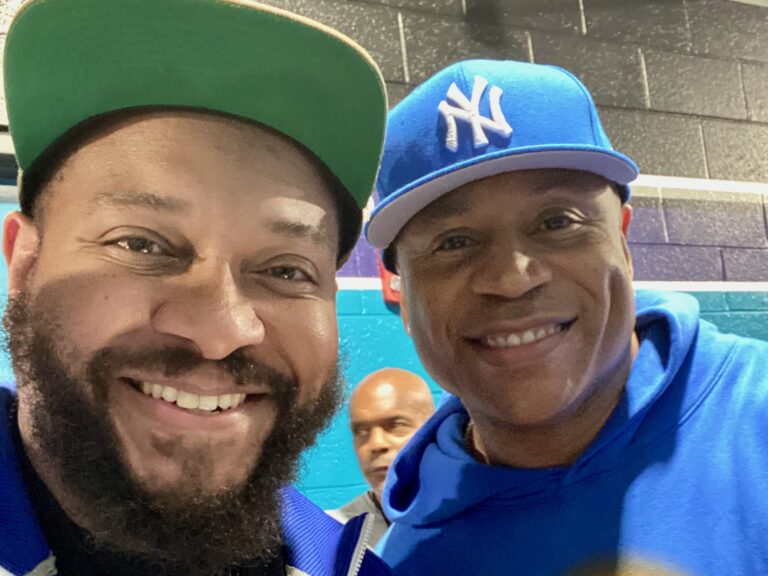We work in the culture business. Our individual and collective efforts have the ability to mold the world outside of our industry’s walls. The stories we report, music we air, programs we produce, and events, webinars and experiences we offer to our audiences all add to the narrative of our multifaceted, multi-lensed society. Our programming is like a tapestry; it offers perspectives carefully designed, woven and crafted with different materials, patterned and textured to make something uniquely appealing. Adding our own flair to the public media tapestry is a privilege we all share; we do not take this position lightly. Each of us brings ourselves, past and present, to our work in hopes of creating something meaningful that resonates throughout history.
It is critical we look at culture when thinking about who has access to public media. To do so, we must examine the definition of culture from an everyday perspective and within the workplace. Generally speaking, culture defines our way of life, such as our norms, values, attitudes, customs, vernacular, and the nuances in between, depending on the group in question. In a corporate setting, culture sets the tone for how business is conducted. It ripples across departments and hierarchy, denoting which behaviors are praised and which are deemed unacceptable. In both settings, culture maintains boundaries, whether physical or psychological, tangible or abstract.
Leadership controls the culture. We look to their vision as our main objective while measuring and observing their every move. This includes a litany of things: their public and private behavior; their decision-making processes; their character; what and who they value; where they divert time, attention and resources; the company they keep, and so much more. The list of attributes that encompass their leadership style is endless. The compilation of these traits creates a culture barometer, measuring the efficacy of the entity’s vision.
Much of my time as a consultant is spent untangling conversations, carefully pulling them apart and then piecing information together to get to the crux of an organization’s culture. In some instances, I have separate conversations with multiple people within an organization and find there is a disconnect between the information both parties share. When this happens, it becomes evident that the organization’s communication mechanisms are strained, signaling a potential culture problem. I ask questions about leadership and how supportive they are in creating a workplace environment where everyone receives what they need to be successful. Too often, I hear comments similar to these:
“When I have a question about a project, or have an idea that could help my department or organization, I’m told to stay in my lane.”
“My organization says it supports professional development, but all of my requests are denied. How do I grow if I’m not receiving the training I need?”
“I have glowing performance reviews and am told the department could not function without me, yet I always get passed up for the promotion and I’m always asked to train the new employee hired for the job.”
“My manager asked me for feedback about a project/situation. I came prepared and explained my concerns and solutions in detail. My feedback was never incorporated and my manager never gave me an explanation as to why.”
“My editor is afraid my story, that includes instances of racism, will upset our core audience and wants the story scrapped altogether.”
“Sometimes I feel like I’m not trusted to do the job I was hired to do.”
“The organization’s leadership continues to ignore recommendations from its Diversity, Equity and Inclusion Council, or makes plans without asking for our ideas, insight or opinions.”
“I always have to jump through hoops to get the things I need/my department needs, while other employees/departments get things handed to them without question.”
“How people are promoted is secretive and exclusive.”
Instances like these occur when organizations lack a value system that everyone is held accountable to. Organizational values like integrity, transparency, respect, diversity, etc. may be mentioned on the first day of the job, or listed in the first few pages of an employee handbook (if your organization even has one), but are they discussed and acted on during daily operations? Do leaders get promoted based on how they display values to everyone, or just a certain population? So often leaders get wrapped up in keeping the organization afloat financially that they forget about their duty to serve their employees before their members, audiences, and board.
I hope what I share next will help you understand why our culture is in disrepair: We have been programmed by certain norms and definitions of “success” and thus these patterns of behavior continue, stagnating the potential for culture change.
As part of its training, The Maynard Institute outlines how White Supremacy Culture Characteristics (which you may remember from Minal Bopaiah’s 2020 PMDMC Summer Series keynote) impact and shape the work we do, what we value, and how we determine if an idea, program or service is or will be “successful.” For the purpose of this article, I am separating these characteristics into overarching themes and including brief examples of how they show up in our workplaces to make them more relatable and less overwhelming:
Characteristics that are deemed “normal” or ideal:
- Perfectionism – I made one tiny mistake and was chastised for it in front of my peers.
- Worship of the written word – Where does your idea fit into our strategic plan?
- Progress is bigger/more – We need to hold even more virtual events for our members and donors now that we cannot hold events in person.
- Either/or thinking – Either we cater to our core audience or we will lose their support.
- Objectivity – If we call something racist, we risk alienating a segment of our audience.
- Paternalism – We do not need focus groups because we already know what is best for our audience.
- Only one right way – My supervisor will not let me try out a new process that could help streamline our work.
Characteristics that maintain the status quo (“It is what it is”):
- Sense of urgency – I know you have a lot on your plate this week, but can you develop this report before my meeting tomorrow?
- Defensiveness – Our employee engagement results have not changed. When I bring this up I receive pushback instead of support or concrete answers on how the results will be addressed.
- Quantity over quality – All fifteen people in the department attended the meeting, yet only three spoke and there was no time allowed for a dialogue.
- Power hoarding – I keep hearing rumors about a reorg, but there has been no communication from leadership about what we should expect.
- Fear of open conflict – Sending out a scripted statement instead of engaging in a discussion with the entire organization.
- Individualism – If I ask for the team’s input, it will take longer to solve the problem.
- Right to comfort – We cannot tell the president the team’s concerns or criticism. It will hurt his feelings.
Some of these examples may sound or feel familiar to you; some may describe how your organization operates, personal behavior, or situations witnessed outside of the workplace. These behaviors repeatedly show up in different facets in our lives; we see them in our family dynamics, entertainment, sports, politics, education, health care settings, and in nonprofit and for-profit organizations far and wide. Whether we like it or not, these characteristics are our default, and anything or anyone that dares to challenge them is labeled negatively: too radical, too aggressive, too divisive, too provocative. However, a bold, and possibly unpopular, approach is necessary to steer our industry away from these characteristics and towards the antidotes listed beneath each of them.
Here are a few examples of how to incorporate antidotes into your organization:
- To combat perfectionism: Consider using the “Rose, Thorn, Bud” approach each time you give feedback or debrief a program, initiative or project. A “rose” shows praise, success, appreciation or a positive outcome. A “thorn” allows for sharing a challenge which can signal the need for more support, guidance, or deliberation. A “bud” is a way to share an idea, a different perspective or something you are looking forward to for the next time. Remember to avoid being vague and focus your comments less on attaining perfection and more on achieving improvement.
- Challenging the idea that there is only one right way: In some aspects, public media prefers when outside entities, collaborators, or partners fit perfectly into its box. We give the edict and expect others to follow suit without question to guarantee that whatever we put our name on will maintain our impeccable reputation. Instead, it is important that we invite people unfamiliar with how public media operates to share their perspectives, styles and needs before embarking on a project. This is especially important when working with new communities or emerging audiences. Assuming you know better, without engaging in a mutually respectful dialogue, may harm the foundation of the relationship.
- Face your fear of open conflict: There are several things we are told not to discuss in the workplace, such as religion, politics, and pay. The first two require us to hide aspects of ourselves that may align with our personal values. The latter could lead to an uncomfortable conversation depending on who is being asked and by whom. All three could lead to an HR or PR disaster. However the problem with not allowing these topics to come up in conversation signals that more sensitive and contentious topics could be skirted as a means to avoid conflict. If you are a manager or in a position of leadership it is your responsibility to manage and even allow conflict. Provide your team with training opportunities that role-play uncomfortable conversations, and hold forums where respectful debate on workplace-related matters are welcomed.
- Share power with your people: Leaders may be wondering, “How do I share power? What does that even mean?” Sharing power is allowing your staff the freedom and flexibility to make decisions, learn from mistakes, utilize resources, and execute plans in a way that aligns with their needs. Here’s the tricky part: leaders have to be flexible, curious, hands-off (to a degree) and trusting. A good leader acts more like a coach than a dictator, reminding teams of the mission, expectations and operational parameters. They focus less on controlling others and instead hold themselves accountable, first and foremost. Leaders who share power are willing to rely on their team to find a solution when they themselves do not have the answer. It sounds simple in theory, but power sharing requires boundless patience, empathy, and tact.
Many organizations are well into this work and recognize the internal culture of a station has to match its external, public image. Through the Public Media For All coalition, stations and organizations are implementing antidotes to address white supremacy characteristics and allowing vulnerability and verifiable transparency to ripple through their workplaces. Here is a sampling of examples:
- KUT in Austin, Texas issued a public-facing apology to its members, acknowledging their own history with racism, and sharing the actions they are taking to be more inclusive.
- WUKY in Lexington, Kentucky is working closely with its university licensee, University of Kentucky, to address inequities and gaps in reaching BIPOC audiences, donors, and recruits, and is partnering on solutions to address them.
Wisconsin Public Media collaborated with the
YWCA Madison to hold internal dialogues on whiteness and how to unlearn behaviors that perpetuate racism and inequity.
- CapRadio in Sacramento, California initiated a space only for BIPOC-identifying employees to discuss topics related to diversity, equity, and inclusion and will turn any challenges into action items for the station to solve.
- Long steeped in equity work, KALW in San Francisco continues to prioritize all-staff dialogues and professional development experiences specifically around anti-racism, bias, and inclusive reporting.
These examples have a common thread: They are developing a people-centered, instead of a power-centered, workplace culture.
The leaders of these stations are defining success differently than their industry counterparts. They recognize that partaking in the glacial pace of change we have all grown accustomed to impacts their employees, which in turn affects their audiences and supporters. Instead, these organizations are embarking on a journey to repair past harms and prevent them from recurring.
We all have to understand that performative measures may soothe some, typically those in positions of privilege and power, but they fail to serve anyone because they do not address the uncomfortable truths. It is time for leaders to roll up their sleeves, be self-critical, and dismantle harmful patterns of behavior in our workplaces so that our public media walk matches our talk.
This essay is part of Greater Public’s thought leadership series focusing on whiteness in public media. This series embraces bold, honest thinking that points the way toward public media’s brightest future.









